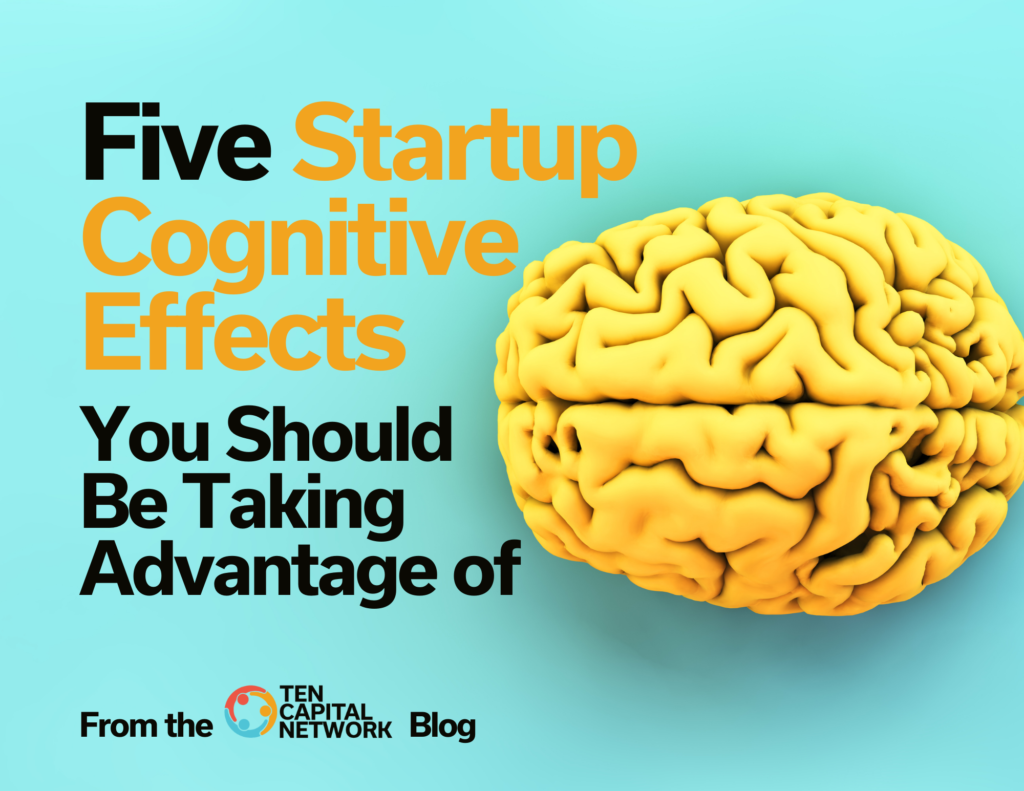2 min read Five Startup Cognitive Effects You Should Be Taking Advantage of
A stellar product, a capable team, and a solid sales and marketing plan are crucial to winning over investors.
However, there are a few things you can do beyond this to help ensure your potential investor sees you in the best light possible. Employ these five cognitive effects to your investor pitch and see the difference.
Zeigarnik Effect
Zeigarnik effect is defined by Wikipedia as uncompleted or interrupted tasks that are remembered better than completed ones. Investors will remember the pitch that leaves them hanging more quickly than the ones that have closure. The cliffhanger in a serialized show is recognized because the action is left unfinished, and it leaves the viewer with an uncompleted story creating mental tension.
To use the Zeigarnik effect, consider the following: In your pitch, close with a cliffhanger ending by discussing an upcoming event such as closing a big sale or hiring a great team member. Use the pending outcome as an excuse to return to the investor later for a follow-up. In general, investors are often curious about startups and how they turn out later. Use this in setting up a follow-up call by offering to give them ‘the rest of the story’.
Picture Superiority Effect
The picture superiority effect is a phenomenon defined by Wikipedia whereby the notion that concepts learned by viewing pictures are more easily and frequently recalled than concepts learned by viewing their written word form counterparts. Investors identify and remember more from images than words. Startups should use pictures rather than words wherever possible in the pitch presentation. Use graphics that are relevant to the content and clarify the message.
When this is not possible, then the startup should use distinctive words. These are words that are descriptive and create an image in the listener’s mind. Startups should capture what they do and how they do it into mantras and taglines. Mantras and taglines create mental images that help the investor remember what you do. Startups can also use video, animation, charts, and graphs as well.
Framing Effect
Wikipedia defines the framing effect bias as drawing different conclusions from the same information, depending on how that information is presented. How you frame the startup in a pitch can determine how an investor regards it.
One can use framing to position a startup, so it’s more relevant to the investor. The investors are tech investors, then position the startup as a tech deal. If the investors look for recurring revenue, then position the startup based on its revenue model. If the investors are impact investors, then position the startup showing the impact it makes. By positioning the startup for the investor, you can increase your chance of aligning with it.
Also, by framing the pitch to show the accomplishments of the startup rather than the work left to be done, one can position the startup as successful and on track rather than falling behind. Use framing to put your startup in the best position to connect with the investor.
Humor Effect
Wikipedia defines humor effect as humorous items that are more easily remembered than non-humorous ones, which might be explained by the distinctiveness of humor, the increased cognitive processing time to understand the humor, or the emotional arousal caused by the humor. Startup pitches with humor are more memorable than those without. Founders should include humor into their pitch as investors will more likely remember it.
Humor also puts a positive spin on the pitch as it removes negative feelings from the investor. It energizes and increases the interest level of the investor in the subject matter. It improves the investors’ perception of the founder as someone friendly and approachable. Humor increases learning ability by telling the investor what they want to hear and following up with what they need to know. Finally, it’s crucial the humor be positive and appropriate and not come at the expense of anyone.
Testing Effect
The Testing Effect is defined by Wikipedia as the fact that you more easily remember information you have read by rewriting it instead of rereading it. Investors remember that which they recall from memory better than just hearing the pitch again. This comes from research showing that taking a test that requires writing out a response improves retention better than just rereading the material, which moves the information into long-term memory.
Founders can use the testing effect by asking investors questions about the pitch to exercise recall. For example, ask the listener: ‘Remember the problem we are solving?’. Give them time to recall it. If they don’t respond promptly, then answer. This avoids the awkward silence that can arise. During the Q&A portion, engage the investor in a dialog that recalls vital points such as the problem you solve, the solution you offer, and the traction you have. This will help the investor remember your deal better.
Feel free to try out our calculators and contact us if you would like to discuss your fundraise: https://www.startupfundingespresso.com/calculators/

Hall T. Martin is the founder and CEO of the TEN Capital Network. TEN Capital has been connecting startups with investors for over ten years. You can connect with Hall about fundraising, business growth, and emerging technologies via LinkedIn or email: hallmartin@tencapital.group





